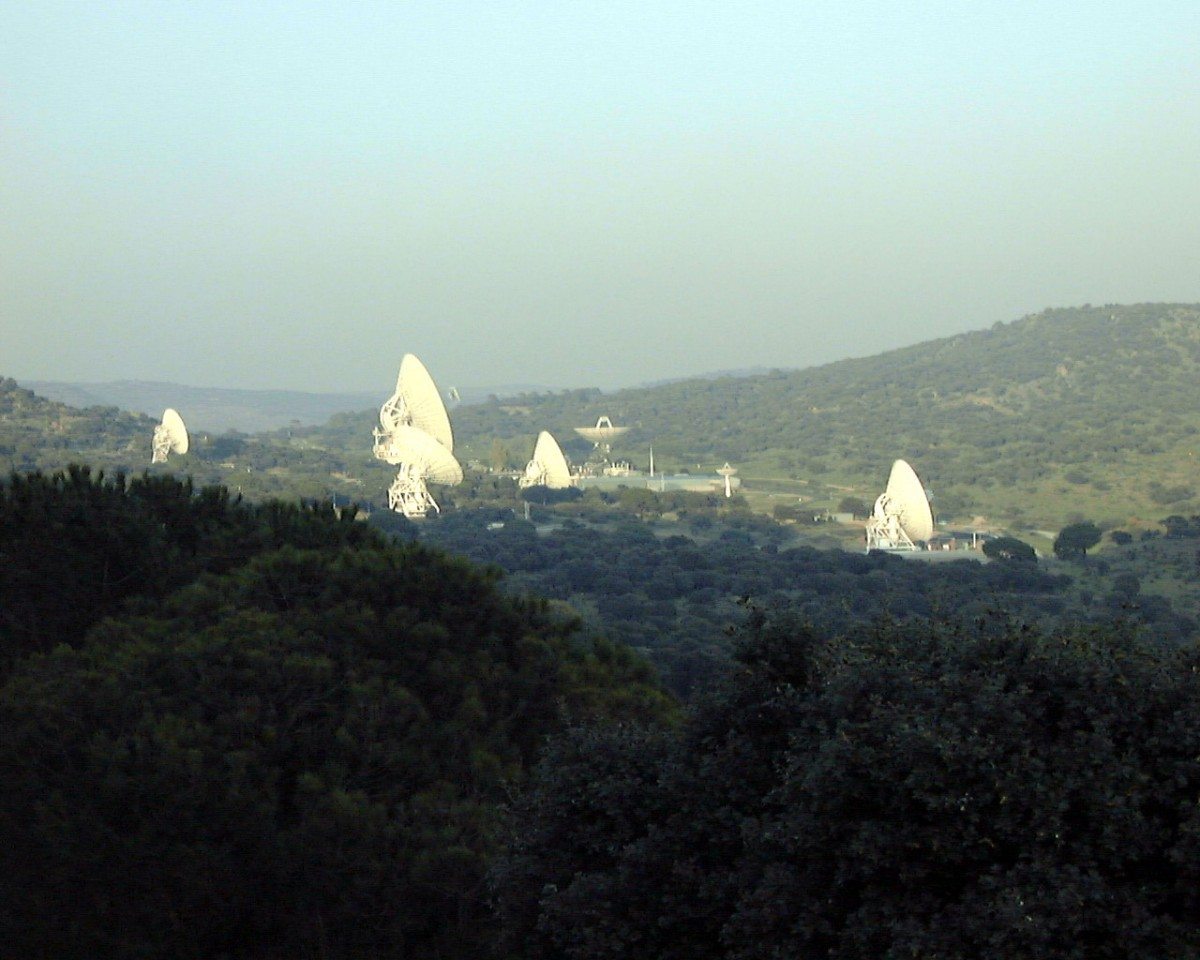When we send a spacecraft out into the solar system, we have to be able to communicate with it. New instructions have to be transmitted to the spacecraft, and data from its observations need to be received. The signals a spacecraft sends are faint by our standards, and you need a strong directed radio signal for the spacecraft to be able to detect it. To achieve this you need large radio antennas to send and receive messages. Since the Earth rotates, you need a global network to communicate with satellites throughout the solar system. It’s known as the Deep Space Network (DSN).
The Deep Sky Network is a collection of radio antenna dishes located in Madrid (Spain), Canberra (Australia) and California in the U.S. Since they are spaced fairly evenly across the globe, any satellite in the solar system can be in contact with at least one station on Earth. The only time they can’t be contacted is when the Sun is near the line of sight between Earth and the spacecraft, or if the spacecraft is on the far side of a planet. Each station has one large 70-meter dish, and several smaller dishes. While other radio antennas can be used to communicate with spacecraft, the DSN is the primary means of spacecraft communication.
One of the biggest challenges facing DSN is the fact that we have an increasing number of spacecraft in our solar system. Often a spacecraft will remain active long after its original mission timeline, and the number of active missions in 2020 is expected to be double the number of 2005. Some of the most ambitious missions, such as the Pluto flyby of New Horizons also require significant use of the largest dishes. As a result, the Deep Space Network is becoming increasingly taxed. It also faces funding challenges. It’s much easier to generate support for the latest “cool” science mission than it is to get funding for the less-than-sexy support infrastructure for such a mission. Without strong support of DSN, our ability to explore the system may soon be limited not by our ability to launch spacecraft, but by our ability to communicate with them once they’re there.













Comments
Mr.Koberlien Sir.would it or could it be possible to place communication satellites in orbit around the planets in our solar system as a.way of bouncing radio signals back and forth between them as a fast a better way of communicating with uunmanned space craft such as Hubbel and the Kepler space telescopes?
Space satellites would be more difficult to maintain, and not really be any better. Radio waves reach the surface of the Earth just fine. The only way to really improve is to have more redundancy and better electronics for the current ground-based system.
Thanks to this, we are still able to receive transmissions from Voyager 1 and 2.
Great blog post, as usual! Thanks.
Earthly factors can also limit the ability of a DSN station to communicate: thunderstorms and high winds surely hinder a station’s ability to stay in touch, as does heavy snow (though I guess that’s rarely a problem).
What happens when lightning strikes a radio dish? Does the receiver (at the focus) get fried?